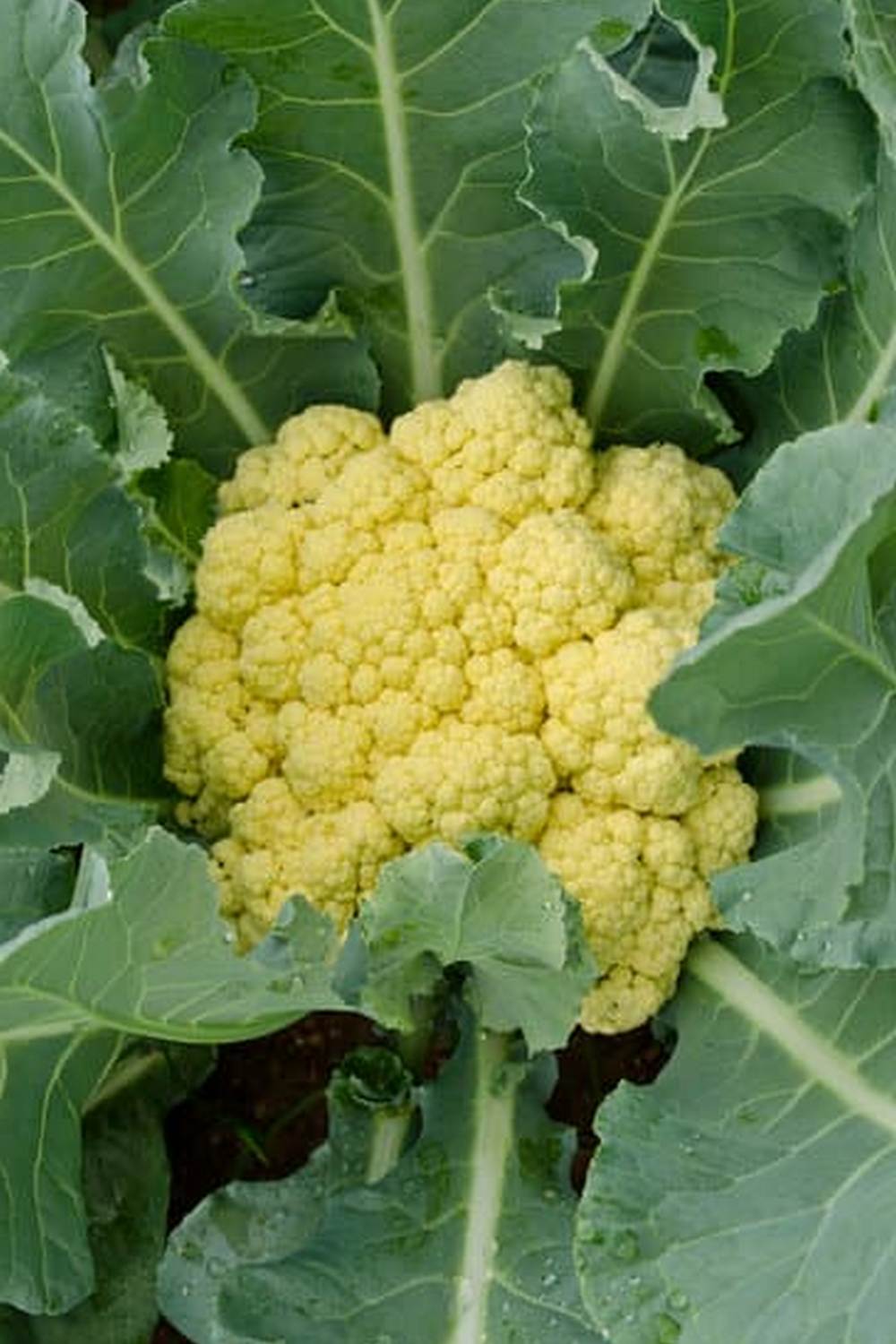Are you struggling with weeds in your vegetable garden? If so, you may want to consider using a pre post emergent herbicide for vegetable gardens.
Herbicides are an effective way to control weeds and ensure the healthy growth of your vegetables. In this article, we will explore the benefits of using pre post emergent herbicides, common weeds found in vegetable gardens, understanding how these herbicides work, application tips, choosing the right herbicide for your garden, and potential risks and concerns associated with herbicide use.
Weeds are a common problem in vegetable gardens and can have a negative impact on the growth and yield of your plants. Using a pre post emergent herbicide can help address this issue by effectively controlling weed growth. By understanding how these herbicides work and their benefits, you can make an informed decision on whether to incorporate them into your garden maintenance routine.
In the following sections, we will delve deeper into the world of pre post emergent herbicides for vegetable gardens. We will discuss common weeds found in vegetable gardens, different types of herbicides available, application and usage tips, as well as factors to consider when selecting the right herbicide for your specific garden needs.
Additionally, we will also address any potential risks or concerns associated with herbicide use and provide recommendations for successfully incorporating these products into your vegetable garden maintenance routine.
Common Weeds in Vegetable Gardens
Vegetable gardens are often susceptible to weed infestation, which can compete with the desired plants for nutrients, water, and sunlight. Some common weeds found in vegetable gardens include dandelions, crabgrass, chickweed, and purslane. These weeds can spread quickly and overwhelm the garden if left unchecked. Identifying these weeds is crucial to effectively combatting their growth and ensuring the health of your vegetable plants.
Negative Impact on Vegetable Growth
Weeds not only compete with vegetable plants for essential resources but can also create a favorable environment for pests and diseases. Their presence can block sunlight from reaching the vegetables, leading to stunted growth or poor yield. Additionally, weeds can hinder proper air circulation around the vegetables, increasing the risk of fungal infections and other diseases. Addressing weed control in vegetable gardens is vital for maintaining a healthy growing environment and maximizing crop production.
Weed control is a crucial aspect of vegetable garden maintenance. It is necessary for preserving the quality and quantity of harvests while reducing labor-intensive manual weeding efforts.
Using an effective pre post emergent herbicide for vegetable gardens can be a time-saving solution that helps prevent weed problems before they begin or address existing weed issues efficiently. By understanding the common weeds found in vegetable gardens and their negative impact on plant growth, gardeners can take proactive measures to maintain a clean, weed-free environment that promotes healthy crops.
Understanding Pre Post Emergent Herbicides
Pre and post emergent herbicides are important tools in maintaining a healthy vegetable garden. Pre post emergent herbicides work to control weeds at different stages of their growth, making them effective in preventing weed infestation and minimizing the competition for nutrients and water that can negatively impact vegetable growth.
It is important to understand the difference between pre and post emergent herbicides. Pre emergent herbicides are applied before weed seeds germinate, creating a barrier in the soil to prevent weed growth. On the other hand, post emergent herbicides are applied to actively growing weeds, effectively killing them upon contact. This dual approach can significantly reduce the amount of manual weeding required in the garden.
There are various types of pre post emergent herbicides available on the market, each with its own set of active ingredients and application methods. Some common active ingredients found in pre post emergent herbicides include dithiopyr, prodiamine, and pendimethalin. It is important to carefully read and follow the instructions on the product label to ensure safe and effective use of these herbicides.
| Common Types of Pre Post Emergent Herbicides | Active Ingredient |
|---|---|
| Dithiopyr-based Herbicide | Dithiopyr |
| Prodiamine-based Herbicide | Prodiamine |
| Pendimethalin-based Herbicide | Pendimethalin |
Using pre post emergent herbicide for vegetable gardens requires understanding how they work as well as applying them correctly for maximum effectiveness while minimizing any potential risks or negative effects on the environment.
Application and Usage Tips
Pre post emergent herbicide for vegetable gardens requires careful application and proper usage to ensure its effectiveness while minimizing any negative impacts. It is important to follow the instructions on the herbicide label and consider the specific needs of your vegetable garden.
When applying pre post emergent herbicides, it is essential to use the correct amount for the size of your garden and the type of weeds you are targeting. Overuse of herbicides can lead to negative effects on soil health and impact the growth of your vegetables. Additionally, using less than the recommended amount may not effectively control weed growth.
Safety precautions should also be taken when using pre post emergent herbicides in vegetable gardens. This includes wearing protective clothing, gloves, and a mask to prevent direct contact with the chemicals. It is best to apply herbicides on a calm day to prevent drift onto desirable plants and to avoid application before heavy rainfall or irrigation.
To maximize the effectiveness of pre post emergent herbicides in vegetable gardens, it is important to apply them at the right time and under optimal conditions. This typically means applying herbicides when weeds are actively growing but before they flower or set seed. Additionally, using a surfactant can help increase the adherence of the herbicide to weed surfaces, ensuring better control.
| Application Tips | Usage Tips |
|---|---|
| Use correct amount for garden size | Wear protective clothing |
| Apply at right time under optimal conditions | Avoid drift onto desirable plants |
| Consider specific needs of your garden | Avoid application before heavy rainfall or irrigation |
Choosing the Right Pre Post Emergent Herbicide for Your Vegetable Garden
When it comes to choosing the right pre post emergent herbicide for your vegetable garden, there are several factors to consider. Here are some important points to keep in mind as you make your selection:
Factors to Consider:
– Type of weeds: Different herbicides target different types of weeds, so it’s crucial to identify the specific weeds plaguing your vegetable garden. For example, if you’re dealing with broadleaf weeds, you’ll want a herbicide that is effective against them.
– Safety: It’s essential to prioritize the safety of your family and pets when selecting a herbicide. Look for options that are labeled as safe for use in vegetable gardens and have minimal impact on the surrounding environment.
– Application method: Consider how easy or difficult it is to apply the herbicide. Some products come in ready-to-use spray bottles, while others require dilution and mixing before application.
Top-rated Pre Post Emergent Herbicides:
1. Preen Garden Weed Preventer: This popular pre emergent herbicide targets a wide range of weed seeds before they can sprout, making it an excellent option for preventing weed growth in your vegetable garden.
2. Roundup Weed & Grass Killer Concentrate Plus: While often associated with killing existing weeds, this post emergent herbicide can also be used as a pre emergent when applied early enough to prevent weed germination.
3. Espoma Organic Weed Preventer: For those looking for an organic option, this pre emergent herbicide is made from corn gluten meal and is safe for use around vegetables.
Finding the best herbicide for your specific vegetable garden needs may require some research and experimentation. It’s essential to carefully read product labels and follow application instructions for optimal results.
Remember that while using a pre post emergent herbicide can help maintain a healthy and thriving vegetable garden, proper weed management also involves regular cultivation, mulching, and maintenance practices alongside the use of these products. By taking all these factors into consideration, you can make an informed decision about which pre post emergent herbicide will work best for your vegetable garden.
Benefits of Using Pre Post Emergent Herbicides
Pre post emergent herbicides play a crucial role in maintaining a healthy and productive vegetable garden. These herbicides are specifically designed to control both existing weeds and prevent the growth of new ones, making them an essential tool for any gardener looking to maintain a weed-free environment for their vegetables.
There are several key benefits to using pre post emergent herbicides in vegetable gardens:
- Effective Weed Control: Pre post emergent herbicides target weeds at different stages of their growth, effectively controlling existing weeds and preventing new ones from taking root.
- Time and Labor Savings: By using herbicides, gardeners can significantly reduce the time and effort spent on manual weeding, allowing them to focus on other important aspects of garden maintenance.
- Improved Vegetable Yield: With fewer weeds competing for nutrients and water, vegetable plants are able to thrive and produce higher yields of quality produce.
When considering the benefits of pre post emergent herbicides for vegetable gardens, it is important to weigh the potential risks associated with their use. It’s crucial to follow proper application techniques and safety precautions when using these products in order to minimize any negative impact on the environment or vegetable crops.
By carefully selecting and using pre post emergent herbicides, gardeners can enjoy a weed-free vegetable garden that is not only more productive but also requires less manual labor for weed control. The proper use of these herbicides can lead to healthier, more abundant harvests while reducing the time and effort needed to maintain a thriving vegetable garden.
Potential Risks and Concerns
Potential Risks of Using Pre Post Emergent Herbicides
While pre post emergent herbicides can be highly effective in controlling weeds in vegetable gardens, there are potential risks and concerns associated with their use. One of the main concerns is the possibility of herbicide residues remaining in the soil, which could negatively impact future plant growth. Additionally, there is a risk of contamination of surrounding water sources if herbicides are not used properly.
Another potential risk is the impact on non-target plants and organisms. Some herbicides may have unintended effects on beneficial insects and microorganisms in the soil, disrupting the natural balance of the ecosystem. It’s important to carefully consider these risks when deciding whether to use pre post emergent herbicides in your vegetable garden.
Minimizing Risks and Safe Usage
To minimize the risks associated with using pre post emergent herbicides, it’s crucial to follow proper application techniques and safety precautions. This includes reading and following the manufacturer’s instructions closely, wearing protective gear such as gloves and goggles, and avoiding application during windy conditions to prevent drift.
It’s also important to store herbicides safely out of reach of children and pets, and to dispose of empty containers properly according to local regulations. Regular monitoring of treated areas for any signs of adverse effects on plants or wildlife can help mitigate potential risks associated with herbicide use in vegetable gardens.
Addressing Concerns About Herbicide Residues
One common concern among gardeners is the presence of herbicide residues in vegetables grown in treated areas. To address this concern, it’s recommended to follow proper waiting periods between herbicide application and planting edible crops. Additionally, some organic herbicides are available for those who prefer natural alternatives with minimal risk of residue accumulation.
By being aware of these potential risks and taking proactive measures to minimize them, gardeners can safely incorporate pre post emergent herbicides into their vegetable garden maintenance routine while still reaping the benefits of effective weed control.
Conclusion and Next Steps
In conclusion, the use of pre post emergent herbicide for vegetable gardens is a crucial practice for maintaining healthy and productive crops. This type of herbicide helps to control the growth of common weeds that can negatively impact vegetable growth, ultimately leading to a reduction in yield and an increase in manual labor for weed removal.
By understanding the types of pre post emergent herbicides available, their proper application techniques, and factors to consider when choosing the right one for your specific vegetable garden needs, gardeners can successfully incorporate herbicides into their maintenance routine.
It is important for vegetable gardeners to carefully assess the potential risks and concerns associated with herbicide use. However, by following safety precautions and minimizing any associated risks, the benefits of using targeted pre post emergent herbicides far outweigh the potential drawbacks.
Reduced labor and time spent on manual weeding, improved environmental impact through targeted weed control, and increased vegetable garden yield are just some of the many benefits that come with incorporating pre post emergent herbicides into your gardening routine.
As a final recommendation, I encourage readers to take action in implementing weed control measures using pre post emergent herbicides in their own vegetable gardens. By utilizing these targeted herbicides effectively and responsibly, gardeners can enjoy healthier crops, reduced labor, and overall improved success in their vegetable gardens. With careful consideration and proper usage, pre post emergent herbicides can be a valuable tool for maintaining a thriving and fruitful vegetable garden.
Frequently Asked Questions
Is Pre-Emergent Herbicide Safe for Vegetable Garden?
Pre-emergent herbicide can be safe for a vegetable garden if used according to the product label instructions. It’s important to choose a pre-emergent herbicide that is specifically labeled as safe for vegetable gardens.
What Is the Best Herbicide for a Vegetable Garden?
The best herbicide for a vegetable garden depends on the specific weeds you are trying to control and the type of vegetables you are growing. It’s important to use a selective herbicide that targets the weeds without harming your vegetables.
Can I Use 24d in My Vegetable Garden?
2,4-D (24d) can be used in a vegetable garden, but it must be used with caution as it is a broadleaf herbicide that can harm certain types of vegetables. It’s important to carefully read and follow the product label instructions before using 24d in a vegetable garden.

If you’re looking to get into vegetable gardening, or are just looking for some tips on how to make your current garden better, then you’ve come to the right place! My name is Ethel and I have been gardening for years. In this blog, I’m going to share with you some of my best tips on how to create a successful vegetable garden.





